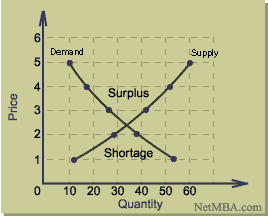Much has been said recently regarding how to properly price our handmade goods in the online marketplace. I find myself wanting to add my "two cents" on the subject. Now, I assure you, I am not an expert in any sense of the word, just an observer.
I'm sure you all know the formula but I've added a few personal tweaks.
Cost Of Goods x 2 + selling fees = Wholesale x 2 + advertising = Retail.
Do you know what each of these terms means? Cost of Goods refers to the actual cost of producing an item, the cost of the raw materials, plus a dollar amount for the time taken to produce an item. (I won't get into the full term of Cost of Goods Sold because that may vary depending on if you are on a cash basis or an accrual basis.)
To put a dollar amount on time, we need to determine how to value our time. This is a really hard part, because most online crafters are homemakers. It's really hard to devote even a whole hour to a project with no interruptions, so calculating true time spent is hard. I've heard $10 an hour as a minimum target to shoot for in figuring out our cost of time. At $10 an hour, you gotta love what you do!
Selling Fees refers to the listing, and selling fees of your online marketplace, as well as any payment processing fees. These need to be worked into the formula to be sure those costs are covered.
Wholesale is the sale of goods to anyone who is not the final customer, but for these purposes, it is the price which we should charge for wholesale sales. The wholesaler, being responsible for making the end sale, will want to be able to make a profit in reselling our merchandise, so the lower price allows for that. Another way to look at it is "selling in bulk". The wholesaler usually buys a large lot of the same item, bulk discounts are normal in commerce.
Advertising dollars is what sellers spend to get people to come into the store and look, or for online, click on our website, or search for our product.
Retail is the sale of goods to the final customer, or for our purposes, the price we will offer our customers. Stated retail prices are high enough to allow for sales, coupons and other marketing strategies while still allowing the retailer to cover the cost he paid for the item. Don't forget, retailers usually are paying employees and rent as well.
While this formula tell us what we should be charging, economics may dictate otherwise. You see, I seem to remember in my college Economics course, this line graph with two intersecting lines. One line was called supply, the other demand. Supply and Demand (and their neat little graph) show us the price that the market will bear. If the market is flooded with an item, for example 200 pinto beans priced at $1 a bean, and there are only 20 people who are wiling to buy a bean at $1, the seller will sell $20 of beans and have 180 beans left over. The seller wants to sell all 200 beans. 50 people are willing to pay 75 cents for a bean. If the seller sells 50 beans at 75 cents, he has sold $37.50 of beans. He has sold more beans and received more money.
Supply side economics are a little harder to understand in the handmade marketplace where most items are unique. We aren't usually dealing with thousands of items, or even hundreds. Supply and Demand (mostly demand) still plays a role though. If no one wants our product, it still won't sell, but here might be more people who would buy it at a lower price.
This is a place where I'm struggling as an online crafter. I've sold a few things of several types of things. I've sold more at my current price points which are in fact less than wholesale. Unfortunately, at that price, I can't afford to advertise to get more traffic to my shop. The longer it takes me to get a sale, the more times I have to renew my listings, which then adds to the cost of my goods. Should I then raise the price every time I renew? I haven't yet, I keep thinking if it didn't sell at $x, then it surely won't sell at $x.20.
While I haven't solved the pricing problem, I hope I have given you some food for thought! Please chime in with your observations as well.

No comments:
Post a Comment